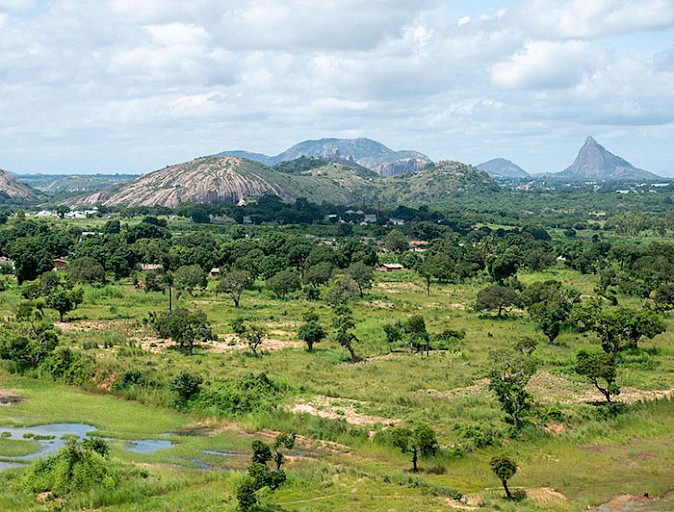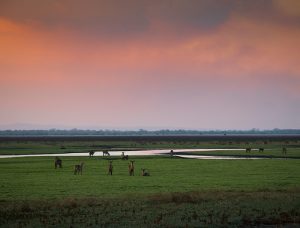The director of the School of Anthropology Felipe Martínez, participates with a team of international researchers in research on the genetics of baboons. This is one of the several studies that are being developed in the Gorongosa Park in Mozambique, within the framework of the Paleo-Primate project, which since 2016 seeks to find some key clues to human evolution.
*This article is an extract from the report published in the Revista Universitaria Nº173: “Mozambique: new clues to human evolution”.
PUC Communication.- Between 1977 and 1992, the Gorongosa National Park in Mozambique it suffered severely from the ravages of the civil war. It went from having about thirty thousand large herbivores and carnivores to just a few, due to indiscriminate hunting for ivory and food. at the end of the war they barely counted a total of three elephants, two buffaloes, seven hippos and a few hundred antelopes. The park’s carnivorous species practically disappeared. It was a catastrophic scenario.
In the mid-2000s, at the invitation of the Government of Mozambique, the Greg Carr Foundation established a public-private partnership to rehabilitate the park and create economic and educational opportunities for the surrounding rural communities. Thanks to science-guided conservation and translocation measures, the number of animals recovered, bringing the Gorongosa ecosystem back to life.
In this context, in 2016, the members of the paleo-primate projectled by the Portuguese Susan Carvalho and the Chilean Rene Bobe –both from the University of Oxford–, and made up of more than 20 scientists from different institutions around the world, we began to work fascinated by the opportunity to investigate in a region without precedents from the point of view of paleoanthropology and human evolution. Gorongosa is located in a strategic place: in the southernmost part of the Great Rift Valley and in the north of South Africa.
The objective of the project is to try to answer through a transdisciplinary approach some of the most fundamental questions in human evolution.: When and where in Africa did our lineage originate? What were the ecological circumstances that led to the divergence of our evolutionary line? How did our ancestors respond behaviorally to particular environmental pressures?, among other questions.
One of the most relevant milestones has been the discovery of the first paleontological sites within the park and the area. The scientific potential of these new deposits is incalculable. The large number and excellent preservation quality of the fossils found are exceptional.

Reconstruction of the past and human development
The park’s ecosystem is highly diverse and offers parallels to the environments where our earliest ancestors evolved. In other parts of Africa, there have been paleoenvironmental reconstructions –that is, reconstructions of past environments– indicating that our ancestors lived in complex environments that combined open and closed forests, with the presence of rivers, lakes and a heterogeneous faunal component. Walking through the floodplains and present-day Gorongosa forests, surrounded by antelope, lion and elephant, one cannot help but feel part of that context.

The project researcher Tina Lüdecke, based in Germany at the Max Planck Institute for Chemistry, has tapped into these possible parallels in his research. The chemical characteristics of water, plants, soil and animals are closely related to the type of environment where they develop. Using stable isotope analysis, she has carried out geochemical characterizations of the park’s modern settings and is carrying out, together with her collaborators inside and outside the team, a similar reconstruction at the paleontological sites. The goal is to model paleoenvironments and understand what they were like and how they have changed.
Another study is on the baboon geneticswhich develop theDirector of the Felipe Martínez School of Anthropologynext to María Ferreira da Silva from the CIBIO Institute of Portugaland Cristian Capelli, from the University of Parma in Italy. The different species or subspecies of baboons on the African continent have a demographic history full of episodes of expansion and contraction, comparable to similar demographic events experienced by human populations of the Pleistocene, for two million years.
The objective of the research is to learn about the gene flow and hybridization processes of these peculiar primates, in order to develop and contrast analogous demographic models in our evolution. (…)
Paleo Primate Project Gorongosa desde Gorongosa National Park on Vimeo.















![[Img #74675]](https://thelatestnews.world/wp-content/uploads/2024/12/They-discover-a-new-class-of-X-ray-sources-in-the-300x200.jpg)